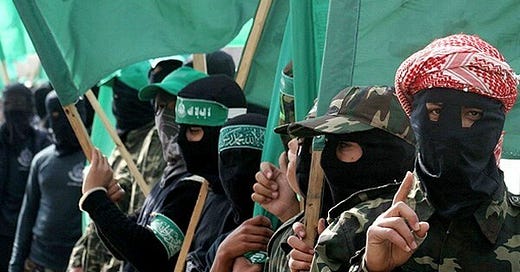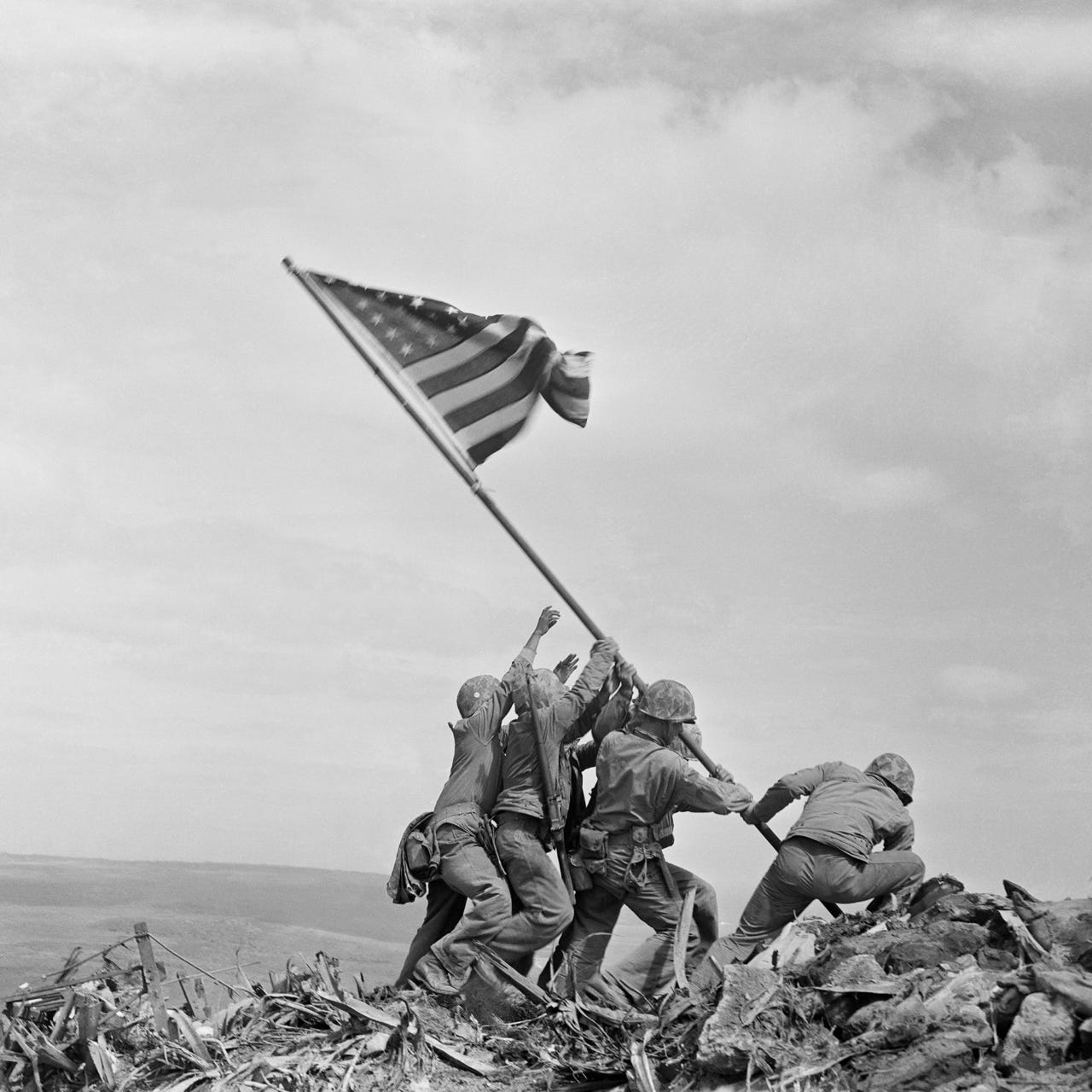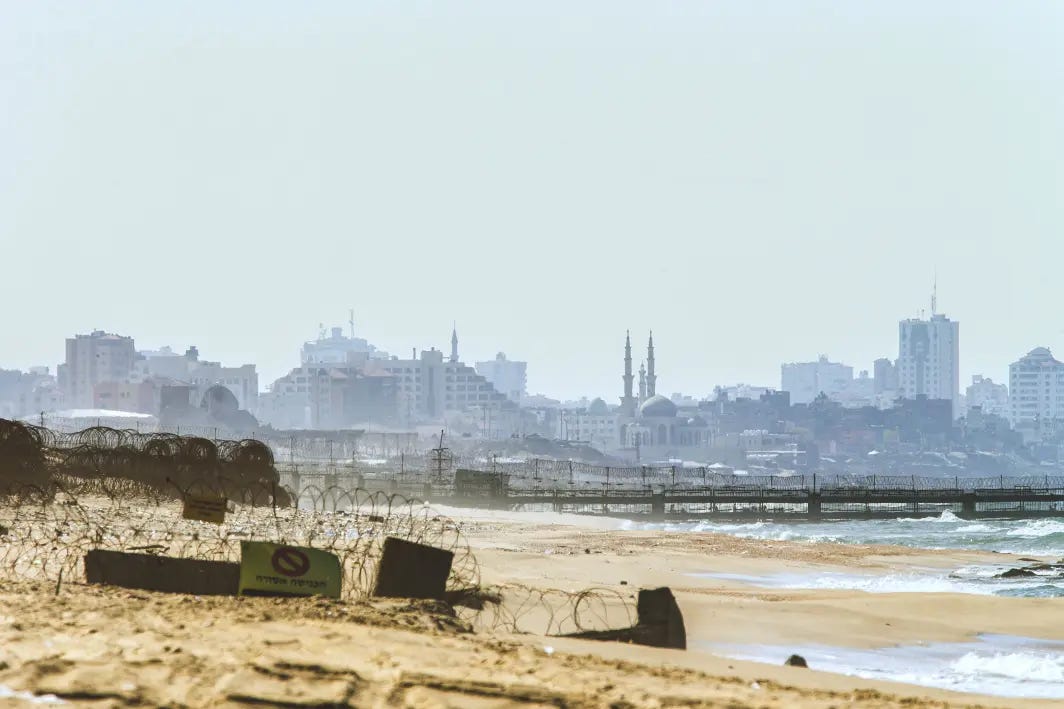What is Hamas Part IX
Black Saturday, known to the rest of the world as the October 7, Massacre Part I
In my last post I covered 2020 to October 6, 2023. Click the link to read it.
Today I will begin to cover the October 7, massacre. I will warn everyone right now that this post is disturbing and contains graphic descriptions and images. Consider yourself warned. However, I believe that the truth must be told and this appalling incident is graphic and disturbing. Shying away from the unpleasantness doesn’t make it go away. We owe it to all the innocent victims to never forget and this is my part in that effort. The story of the events of October 7, is too big for one post, unless you want one that takes an hour to read. So this is part o e and, next week I will complete the coverage of this tragic event.
The October 7, Massacre
On Saturday October 7, 2023 at 6:30 am (Israeli time) on Simchat Torah, right after the festival of Sukkot and 50 years and one day after the Yom Kippur War, Mohammed Deif, the Hamas military commander, announced the start of an operation, called Operation Al-Aqsa Flood. He declared in an audio message that the operation was "to end the last occupation on Earth". Deif said the attack was in response to the 16 year blockade of Gaza, Israeli incursions in West Bank cities, violence at the al-Aqsa mosque, as well as Israeli settler violence, which had been on the rise recently.
Opening Salvos
The attack began in the early morning with a barrage of 3,000 rockets launched into Israel. Hamas issued a call to arms, with Deif calling on "Muslims everywhere to launch an attack". Explosions were reported in areas surrounding Gaza and in the Sharon Plain, including Gedera, Herzliyya, Tel Aviv and Ashklon. Air raid sirens were activated as far away as Beersheba, Jerusalem, Rehoboth and Palmachim.
Simultaneously, around 2,900, Palestinian militants infiltrated Israel from Gaza using trucks, motorcycles, bulldozers, speedboats, and powered paragliders. Israeli first responders recovered documents from dead terrorists with instructions to attack civilians, including elementary schools and youth centers, to "kill as many people as possible", and to take hostages for use in future negotiations. Some of the militants wore GoPro cameras to record their despicable acts, for propaganda purposes and to lord over the families of the victims.
The morning of the attack, Hamas entered Israel in seven separate locations and invaded small rural communities, the border city of Sderot, and two military bases from both land and sea. Seven communities came under Hamas control, including Nahal Oz, Kfar Aza, Magen, Be’eri and Sufa. Even the Erez Crossing came under Hamas control, enabling Hamas to enter Israel easier. Israeli Police Commissioner Kobi Shabtai said there were 21 active high-confrontation locations in southern Israel.
Other Hamas terrorists carried out an amphibious landing in Zikim and stormed the local IDF base. Hamas also attacked a military base outside Nahal Oz. Even the Sderot police station also came under Hamas control.
Hamas terrorists also opened fire on Israeli boats off the Gaza Strip, while clashes broke out between Palestinians and the IDF along the eastern section of the border fence. That evening Hamas launched another barrage of 150 rockets towards Israel, with rockets landing in Yavne, Givatayim, Bet Yam, Beit Dagan, Rishon Lezion and Tel Aviv.
The Nova Music Festival
The Supernova Sukkot Gathering near kibbutz Re'im was another place of horror and death. It began at 6:30 am when rockets streaked across the sky, by 7am air raid sirens were heard, causing festival goers to flee. As people started to run, Hamas arrived in trucks, motorcycles, and even powered paragliders. They surrounded the festival grounds and indiscriminately fired on individuals attempting to escape. Concert goers seeking refuge in nearby bomb shelters, bushes, and orchards, were killed when they were found, Hamas even killed the wounded as they lay on the ground. Those who reached the road and parking were trapped in a traffic jam as the terrorists methodically went from vehicle to vehicle killing any men they found and dragging the women off for an even worse fate. By the time it was over, Hamas had killed 376 Israelis including Shani Louk. Later on October 7, a video emerged showing Louk's body, partially clothed, with a significant head injury and blood on her hair, being paraded through the streets of Gaza City, by Hamas terrorists in the back of a pickup truck; they were yelling “Allahu Akbar”, and were joined in the cheers by the people in the crowd surrounding the vehicle, some of whom spat on her body.
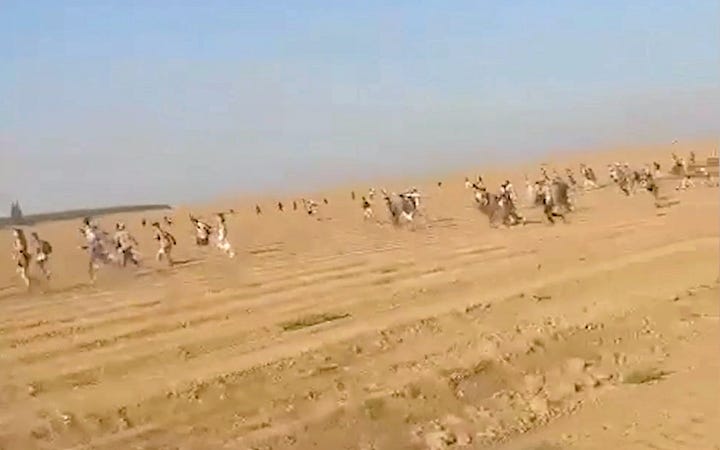
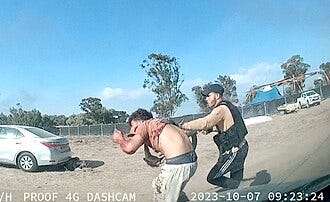
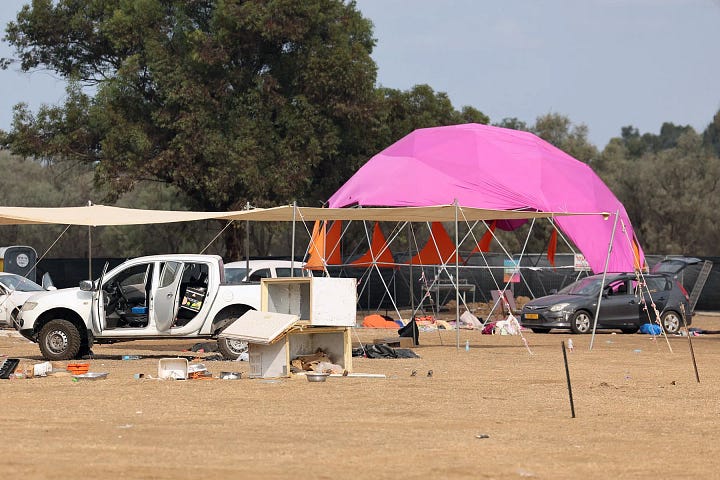
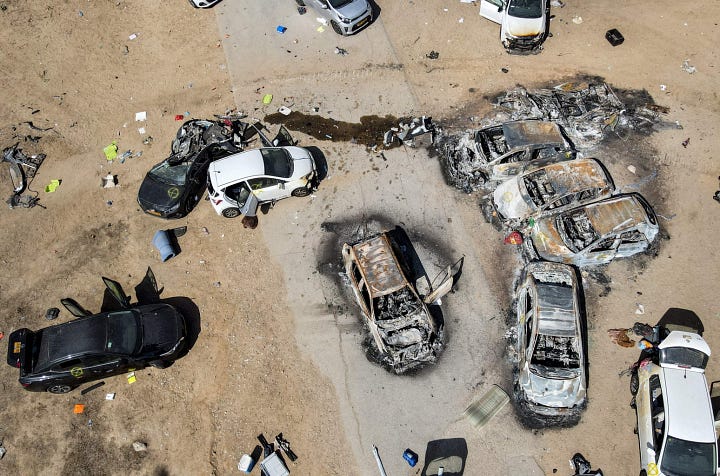
According to video evidence, survivors and emergency responder testimony, Hamas raped many women attendees. A woman hiding from Hamas described the scene of horror she witnessed. She said, "They bent a woman over and I understood he was raping her, and then he passed her on to someone else. I remember seeing another person raping her, and while he was still inside her he shot her in the head." Another survivor told a Knesset panel that she saw naked and violated girls, sliced bodies and girls who had been raped so violently that their pelvises were broken. Another survivor recounted the ghastly scene she witnessed. She said, "They had caught a young woman near a car and she was fighting back, not allowing them to strip her. They threw her to the ground and one of the terrorists took a shovel and beheaded her and her head rolled along the ground.” A third survivor said that militants had cut off a woman's breast and played with it. A video of the massacre shot by a survivor searching for her friends verified by the New York Times showed a woman lying on her back with her face burned, dress torn, legs spread and vagina exposed. She was later identified as Gal Abdush, mother of two from central Israel. One witness told the New York Times that 100 Hamas militants congregated along a road passing badly wounded women to each other. The witness said she saw at least five women raped in front of her while she hid. Another witness recounted that he saw men in civilian clothes drag a woman out of a van near the concert site, he said they gathered around her and penetrated her while she screamed and then one of the men killed her with a knife. A group of ZAKA volunteers (the english translation of the Hebrew acronym means Disaster Victim Identification), discovered corpses of women with their legs spread and underwear missing, some with hands tied by rope or zip ties. Jamal Waraki of ZAKA said he saw a dead woman bent over half naked with her underwear rolled down between her knees.
Hamas also kidnapped 40 people from the concert site. Videos on social media showed them being roughly treated and led through a gauntlet of jeering Hamas fighters. The captives were taken to the Gaza Strip where some were filmed in Hamas propaganda videos.
Kfar Aza
Also on the morning of October 7, 2023, 70 Hamas fighters broke through the border fence and attacked Kfar Aza, about two miles from the border. After gaining access to the kibbutz, the terrorists targeted the west side of the community, the area of the kibbutz closest to Gaza, where a number of families with young children lived.
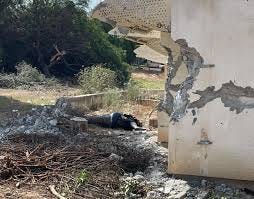
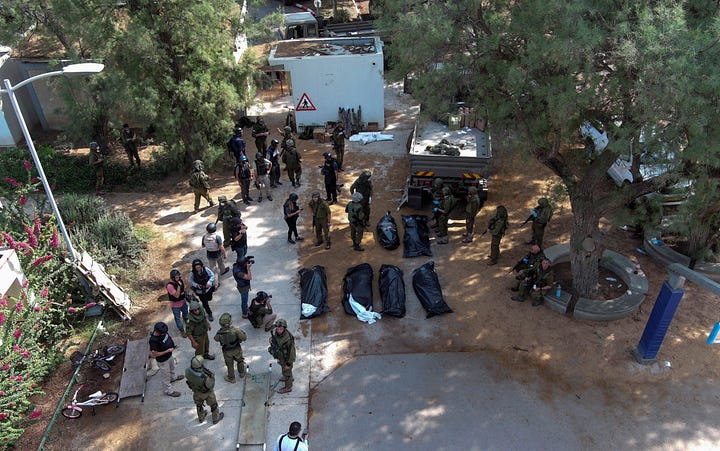
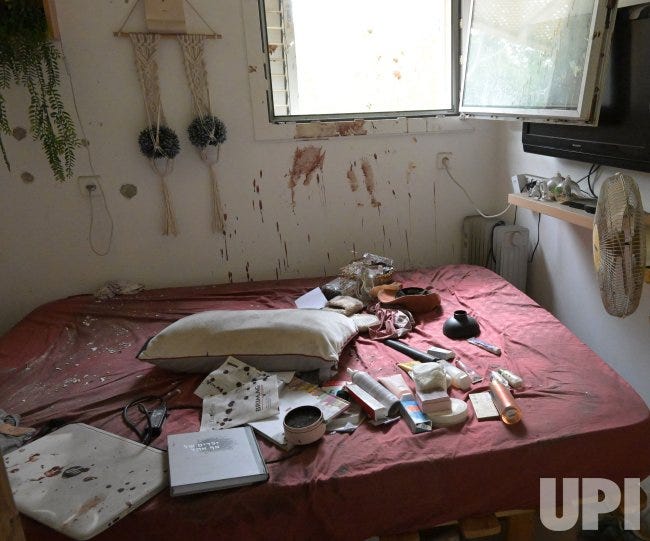
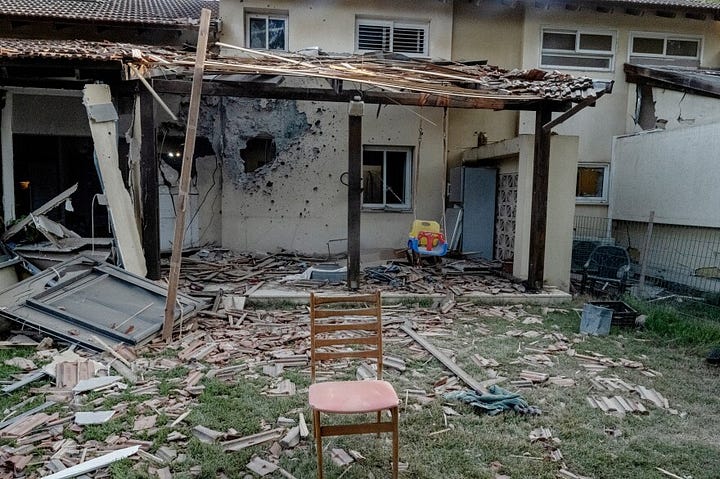
Members of the kibbutz with military training, formed a volunteer armed guard and tried to defend their community against the invading terrorists. Eventually, all of the defenders were killed, after which Hamas expanded the attack to the rest of the kibbutz. They burned houses and killed the residents as they went. Many bodies were found with their hands tied. During the attack, 54 were killed and 20 were taken by Hamas as hostages, including women, children and senior citizens. Eventually, paratroopers of Unit 71 and the commandos of the Duvdevan Unit led the assault to retake the community, but it took two days to wrest full control of the kibbutz from Hamas.
Be’eri
Hamas arrived at the gate of the kibbutz at 6:00 am, disabling a vehicle there and killing the occupants. By 7:10 am, the first messages on a WhatsApp mothers group were flying around containing images of three motorbikes, each carrying two heavily armed Hamas militants, entering through the main gate. At 9:05 am, Hamas was seen dragging a corpse from the car they had destroyed earlier.
Tutorials on locking the safe room doors were shared on the WhatsApp group, but concerns were expressed over the shelters' inability to stop attackers. Hamas attackers went around the neighborhoods, shooting and throwing grenades into the “safe rooms, massacring the occupants of each house and setting some on fire with Molotov cocktails. The kibbutz residents used WhatsApp to advise occupants and share houses that were safe, but it also turned increasingly desperate as mentions of the deaths of family members including a dead baby were sent. One 10-month-old baby is confirmed to have been shot during the attack, while being held in the arms of her mother.
Two hours after the massacre began, twenty troopers from the IAF elite Shaldag unit arrived by helicopter at Kibbutz Be'eri. Five were killed and one was wounded by the militants in a very short time, many of them near the iconic yellow gate of the kibbutz. The surviving commandos were forced to retreat because of the high number of casualties they suffered in the initial landing.
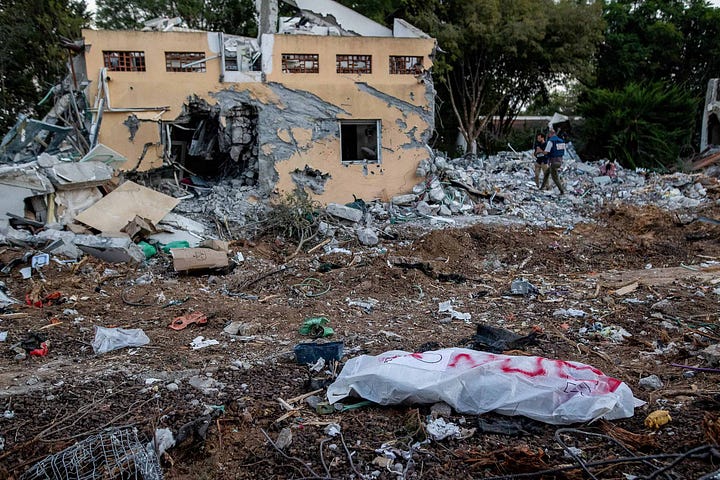
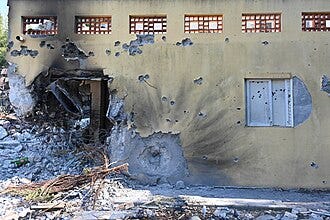
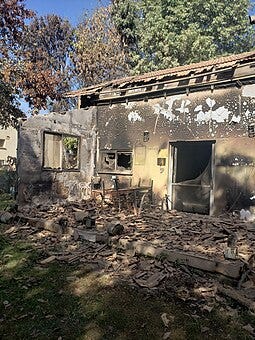
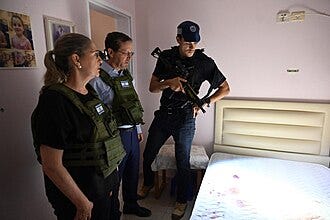
At 6:00 pm, IDF forces, including two tanks, arrived and killed most of the militants. However, behind the main dining hall, 26 Hamas fighters held 15 Israelis as hostages. When the IDF assaulted the building, 13 of the hostages, including two 12-year-old twins, were killed in the crossfire as Hamas militants and Israeli forces exchanged fire and the tanks fired on the building. The twins' bodies were burned so badly it was more than a month before they were identified. A resident said Israeli forces only gained control on October 8, after commanders in the field made difficult decisions – including shelling houses with their occupants inside, without knowing whether the hostages inside them were dead or alive.
After the kibbutz was secured, the bodies of four civilians were discovered near the Gaza border. It appears that they attempted to escape from Hamas custody while being moved to Gaza, and were killed.
130 people were killed in the attack, including women (such as peace activist Vivian Silver, who advocated for peace with Hamas), children, toddlers, and one infant. The attack claimed the lives of 10% of the farming community's residents.
Hamas did not spare the residents of this overwhelmingly leftist kibbutz from their pattern of sexual violence. A paramedic from the 669 Special Tactics Rescue Unit, said he went house to house looking for anyone still alive after the attack and found the bodies of two young teenage girls in a bedroom. He said that he had no doubt one of the teenagers was raped, but he did not know if she had died first. He also found two bodies of women with their legs and hands tied to their beds, one of whose' genitals were stabbed with a knife and her internal organs removed.
The IDF base and the kibbutz at Nahal Oz
At the same time as the other attacks, 45 terrorists slipped through the border fence system and ran towards the military base near Nahal Oz. Hamas engaged in a brief battle with the guards at the gate, killed them and went inside, the soldiers at the post were surprised, and most of them were killed. In the operations room of the 13th Battalion of the Golani Brigade, staff officers and enlisted troops barricaded themselves inside. They tried to communicate with their forces outside the base but most Golani soldiers were spread out across the border area and were not defending the base. There were also attempts to call in helicopters for air support but they received no answer. The battalion commander and two lieutenants exchanged fire with the militants outside the Ops room, barring the way. They continued to fire back until the terrorists killed them with grenades, then threw explosives inside the room killing the occupants. The 13th Battalion suffered 41 killed, which was more fatalities than it suffered in the Six-Day War and the Yom Kippur War combined.
At the time of the attack, 27 soldiers of Unit 414 of the Combat Intelligence Collection Corps, most of whom were female were stationed at the base. Their duty was to conduct reconnaissance on the border with Gaza as well as to operate the remote-controlled gun turrets emplaced alone the border fence. Most soldiers at Nahal Oz were not provided a handgun or rifle to defend themselves, despite their outpost being less than a mile from Gaza. When Hamas attacked, the base only had a few combat soldiers stationed there and they were easily defeated. The unarmed Unit 414 soldiers hid in a bomb shelter. When Hamas found them 20 of them were killed and six were captured.
Inside the kibbutz
100 Hamas militants who carried out the surprise attack at the IDF base, infiltrated kibbutz Nahal Oz. The militants broke into homes, kidnapped some kibbutz residents, and killed others. The kibbutz's security team responded and battled the militants for hours. The kibbutz security coordinator, Ilan Fiorentino, was killed in the fighting. In addition, a unit of Israel Border Police who had been posted to the area a week before arrived in the kibbutz and took part in the fighting. One of the Border Police officers on the scene, Yaakov Krasniansky, was killed while battling numerous militants; his body was found together with the bodies of five militants. Several other Border Police officers were wounded. At 11:30 am, 100 Israeli soldiers from the Givati Brigade, originally heading to Sderot, were diverted to Nahal Oz. When they arrived they began to clear the kibbutz and the army outpost of militants. In the kibbutz, troops went door to door, killing militants as they found them, in a perverse reversal of the original attack. As the kibbutz was cleared, civilians emerged from their safe rooms, where they had been hiding. After regaining control of the kibbutz, the IDF continued to engage isolated attempts by militants to enter the kibbutz using motorcycles and vehicles. The extensive resistance by the residents and the quick arrival of IDF troops likely prevented the massacre from reaching the scale of killings that occurred in Nir Oz and Kfar Aza.
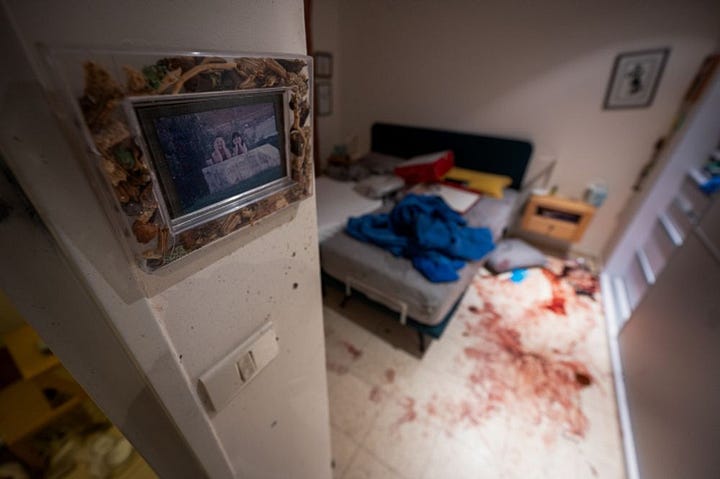

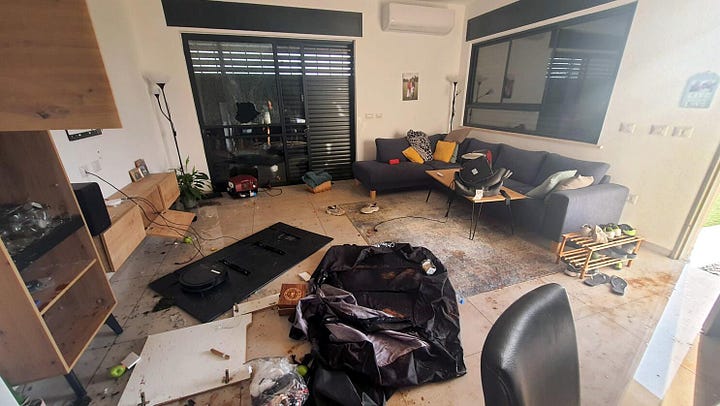
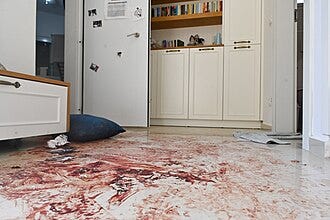
65 IDF soldiers and 35 civilians were killed in the massacre, among the victims were photographer Yaniv Zohar and most of his family, and Eden Nimri, an international-level swimmer. Additionally 30 people, both IDF troops and civilians were taken hostage.
The IDF base and kibbutz at Zikim
On October 7, at 6:30 am, the IDF training base at Zikim was struck with what its commander called an "insane volley" of rockets, as well as a heavy artillery barrage that also targeted Sderot and other communities across the area, signaling the commencement of Operation al-Aqsa Flood. In response to the surprise bombardment, new recruits on patrol duty at the base perimeter fence were immediately sequestered in safe areas and replaced by regular troops. By 6:45, the garrison began hearing gunfire from the direction of nearby military bases. Observers at the Yiftach outpost witnessed dozens of Hamas fighters breaking through the border fence, driving motorcycles, trucks, and even tractors towards their outpost. They arrived outside Yiftach's gate at 7:00, and, Sergeant Eden Levy, 19, the only guard, called for reinforcements. She was soon joined by three young soldiers who rushed to the gate without uniforms, and a member of the 13th Battalion of the Golani Brigade who had been stationed nearby. The remainder of the garrison chose to shelter in place, and the five defenders were quickly overwhelmed and killed by numerically superior Hamas forces. Inside the outpost, two soldiers died and several were injured in intermittent clashes that lasted for twelve hours, though Hamas never breached the base's command post. By 7:30, Hamas had moved to the Zikim training base, and patrol teams at two separate locations spotted militants and reported incoming fire. The two highest-ranking officers on the training base at the time of the assault, company commander Captain Adir Abudi, 23, and deputy company commander First Lieutenant Or Moses, 20, were killed in the initial Hamas assault and three other soldiers were wounded. Another sentry post was overrun once its defenders ran out of ammunition after 45 minutes of attacks. Four soldiers were killed and two others wounded at that location, which was near the base firing range.
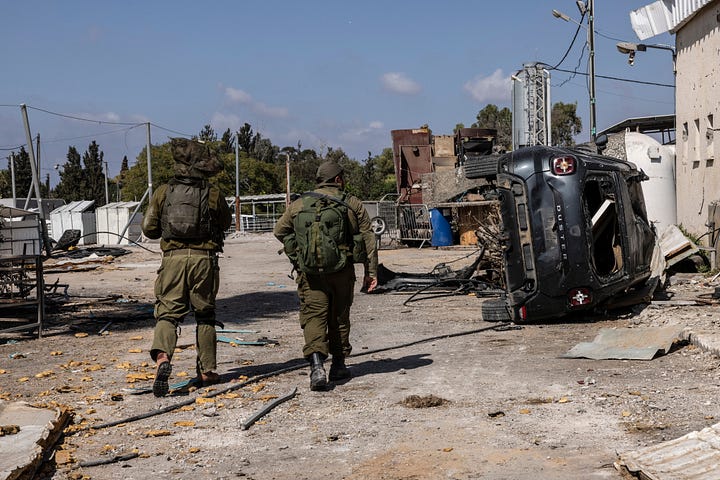

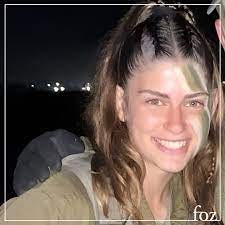
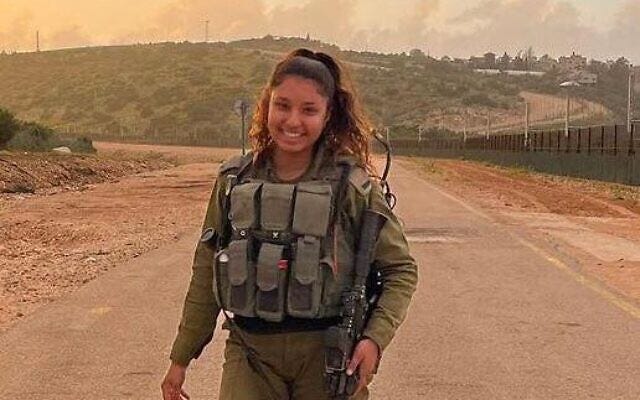
The fall of the firing range post left a hole in the base perimeter which Hamas exploited, but they did not go further into the base. Base Commander Lieutenant Colonel Shay, who was not on base at the time of the attack, (many IDF forces were at home because of the Sukkot holiday), believed they had taken too many casualties to effectively assault the rest of the base. A single Hamas fighter managed to breach one of the "safe areas" where recruits were sheltering, killing an 18-year-old private who had been drafted two months prior before being killed by another recruit.
Shay, who was at home in Sderot at the time of the battle, requested support from the nearby military bases, but realized that there was "no one to talk to" as they were also under assault. The other two bases in the area were eventually overrun with serious loss of Israeli life.
Naval incursion and landing
Amid the 6:30 rocket barrage, which also targeted Israeli naval facilities, four boats with 35 fighters from the Nukhba unit, Hamas naval commandos, were observed crossing into Israeli waters from the Gaza fishing zone. Three of the boats were destroyed by vessels of the 916th Patrol Squadron from the Ashdod Naval Base before they reached the shore. Sailors of the Snapir unit, the Israeli Navy's protection and harbor security unit, moved in on Defender Class boats and killed the survivors as well as Hamas divers they discovered with gunfire and depth charges. However, the remaining boat soon made it to Zikim beach. Colonel Eitan Paz, commander of the Ashdod naval base, immediately ordered the forces under his command to defend the Israeli maritime border and prevent raids on the coast.
Zikim beach
Eleven Hamas militants managed to land on the beach. Three were killed by naval gunfire shortly after landing, but the rest began killing civilians on the beach. 19 beachgoers were killed; included fishermen, teenagers on a camping trip, and employees of a bar in Beersheba who had held a party on the beach the previous night. Hearing the shots, four soldiers of the 51st battalion of the Golani Brigade stationed at the nearby Erez IDF base went out to the beach in a military vehicle to investigate. Realizing they were outnumbered, three of them retreated and left the vehicle behind while one moved to engage the Hamas fighters and was killed.
30 civilians fled the beach and took refuge in the Zikim training base, where they were kept in the same secure area as the recruits. Reinforcements from the Nahal Brigade were sent to Zikim beach and killed several militants on the beach before moving forward to support other units.
At the kibbutz
The bulk of the remaining Hamas fighters were killed while attempting to enter the kibbutz of Zikim. An emergency security team made up of civilians had been alerted to the infiltration by the navy, positioning themselves along a fence surrounding the kibbutz. A squad of six Hamas militants arrived at the kibbutz driving the Israeli military vehicle that had been abandoned on the beach. A firefight quickly ensued, and the militants dispersed, eventually being tracked down and killed after about an hour of combat. The security team remained at their positions until 2:30 the next morning, assisting in the evacuation of civilians and awaiting IDF reinforcements that never arrived.
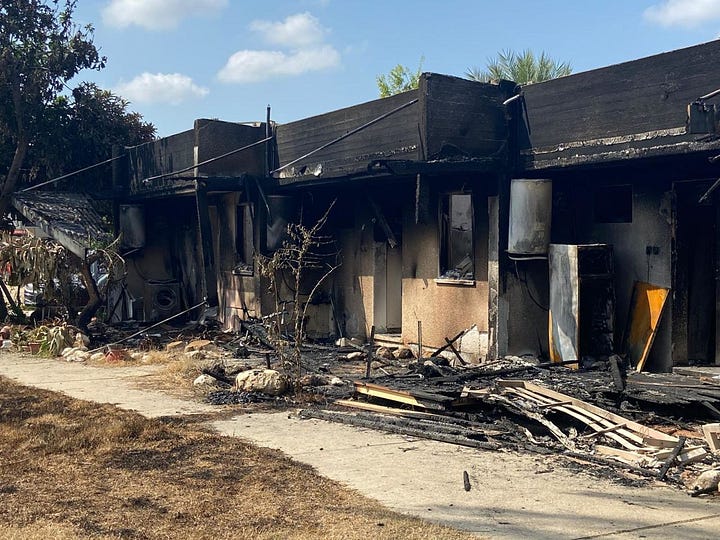
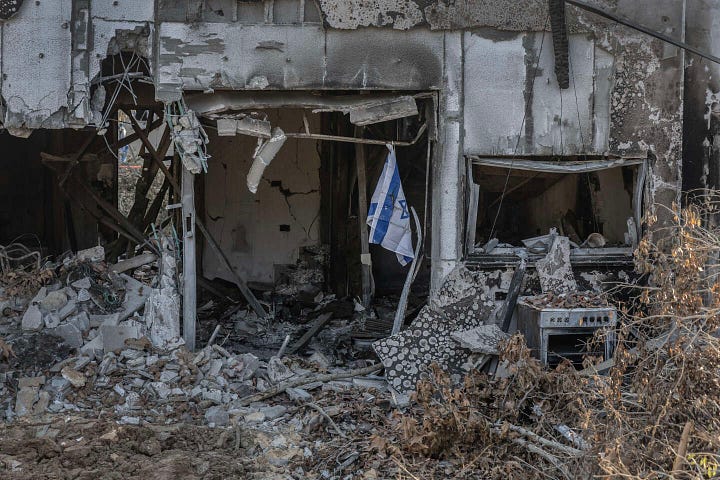
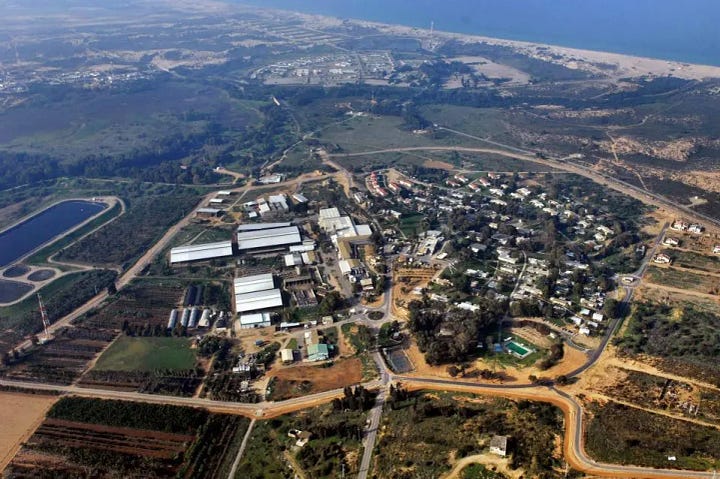

After the Hamas assaults on the military bases, Sayeret Maglan and Flotilla 13 forces secured the area, deployed along the border fence and assisted in the evacuation of civilians and recruits.
The commander of the Zikim training base, Lieutenant Colonel Shay, credited the resistance at the kibbutz with preventing massacres in Zikim, Katmia and Ashklon. Israeli Minister of Defense Yoav Gallant made similar comments about the garrison of Yiftach camp, saying they "obtained life for the civilians who live a bit further away.”
Nir Oz
Nir Oz is a kibbutz located 4.5 miles from the Gaza border, by 7am the first Hamas militants had reached the kibbutz. Hamas was firing rockets at Israel at the time of the attack, so most residents were in their safe rooms as the attack began. The kibbutz security team attempted to fight off the attack, but were outnumbered and the majority of the team were killed or taken hostage while defending the kibbutz. Hamas, then spent several hours in the kibbutz, killing civilians, setting homes on fire, abducting hostages and live streamed the whole thing. Palestinian civilians from Gaza also arrived in Nir Oz to loot residents' homes. So much for the whole Palestinians are not the same as Hamas, thing. Eleven hours after the attack began and long after Hamas had retreated back to Gaza, the IDF finally arrived. The surviving kibbutz members were evacuated to Eilat.

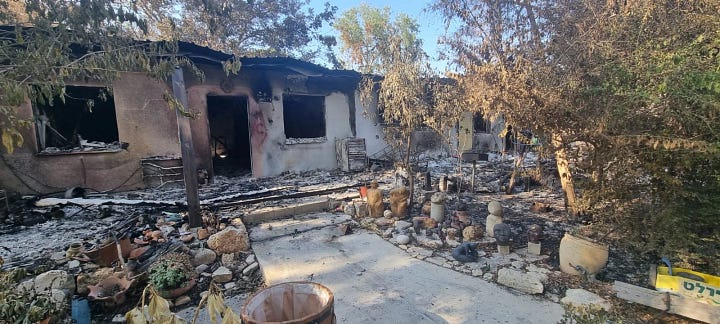
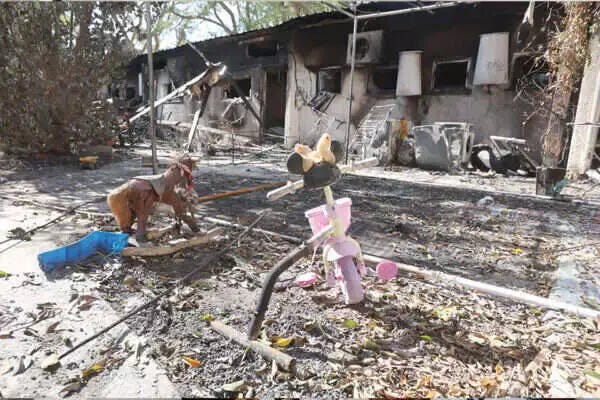
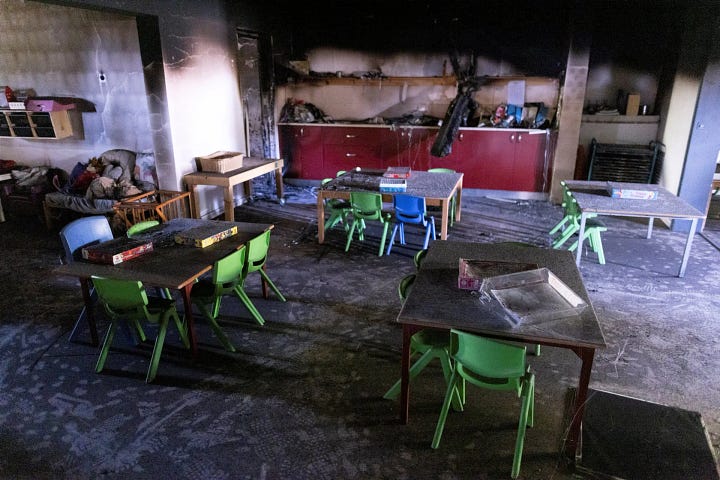
46 people were murdered in the kibbutz during the attack, including the the Israeli-American Kedem-Siman Tov family. The three adults and three children under seven were killed inside their secure room at the kibbutz, by Hamas hand grenades. The murder of Bracha Levinson, 75, was filmed and posted on her Facebook wall by Hamas for her family to see. Two people were missing and it was initially assumed that 12-year-old autistic girl Noya Dan and her 80-year-old grandmother Carmela Dan were among the Hamas hostages. Noya Dan was a fan of Harry Potter and author JK Rowling called for her release. Unfortunately, on October 19, 2023, the bodies of both Noya and Carmela Dan were discovered by the IDF in Gaza, near the border. Both bodies showed evidence of sexual assault.
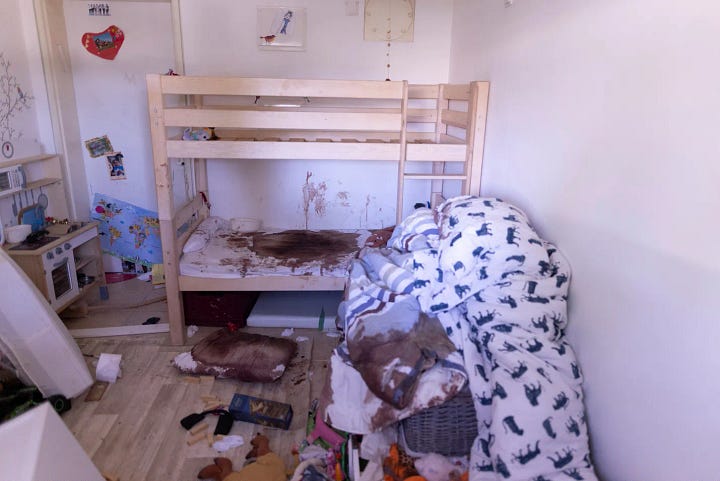
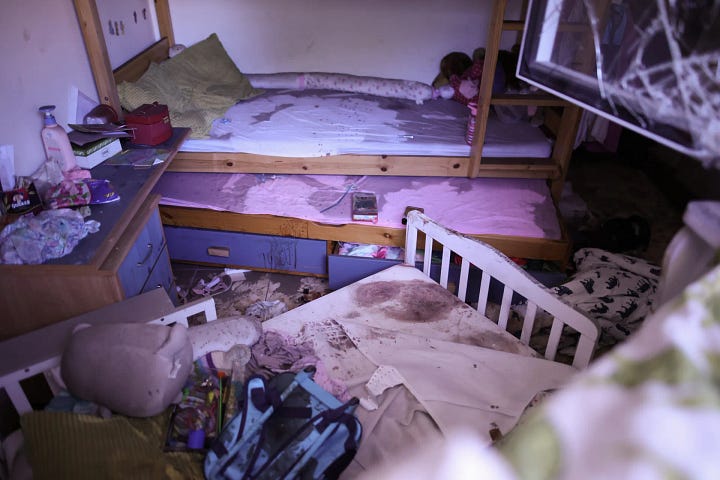
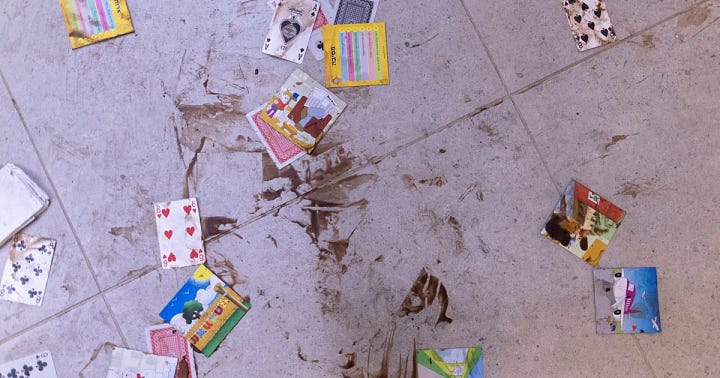
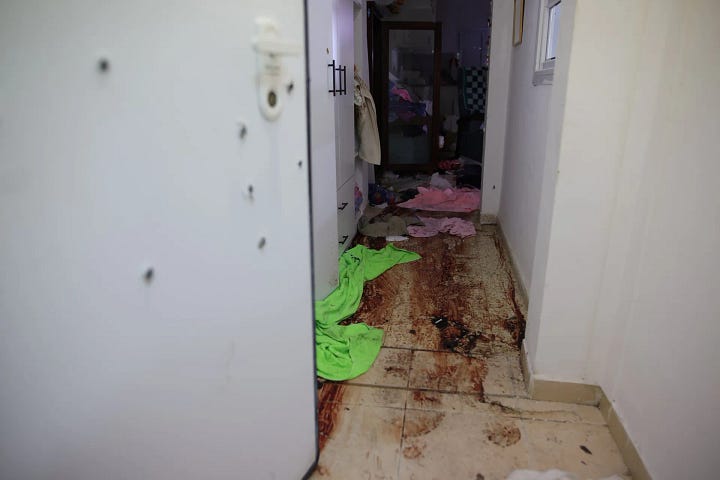
71 kibbutz residents were taken hostage during the attack, with 40 being released during the weeklong ceasefire in late November. Twelve of the 13 hostages released on November 24 and all eleven hostages released on November 27 had been taken from Kibbutz Nir Oz. Polish-Israeli historian Alex Dancyg and Israeli journalist Oded Lifshitz, both of who are elderly, as well as 9-month old baby Kfir Bibas were all released during that period. Some of the hostages died in captivity. On December 1, 2023, the IDF announced that four kibbutz Nir Oz residents had died in captivity. On December 21, it was announced that Gadi Haggai had died in Hamas captivity and on December 28, his wife Judi Haggai, who had been severely wounded during the attack had died. As of this writing their bodies are still being held in Gaza.
Sderot
That fateful morning Hamas gunmen entered the city of Sderot (with a population of over 30,000 it is the closest city to Gaza, only one mile away) and engaged in firefights with local police units and civilians. Hamas killed people as the waited at bus stops, walked down the street, or drove by in cars. They attacked the Sderot police station and eventually overpowered the garrison and occupied it, killing approximately 30 people (both police officers and civilians).
At the same time a bus left Beersheba stopping in Ofakim, Netivot and then Sderot, picking up 15 retirees, some of them Holocaust survivors, for a trip to the Dead Sea. As they were leaving Sderot, the bus got a flat tire. At that point, an air raid siren sounded, and the occupants of the bus got out and ran towards the shelter, but the shelter door, which was supposed to be an automatic opening door, did not open. At that moment two vans loaded with Hamas terrorists noticed the group who saw them at the same time. The retirees tried to get away and one passenger, along with the driver managed to hide behind the guardrail. The terrorists got out of their vehicles and shot them all at point black range, then went back and shot everyone in the face to make sure they were dead. When they noticed the other two people they shot at them, killing the woman and wounding the drive who played dead, lucky for him the terrorists were not interested in wasting more ammunition and moved on.



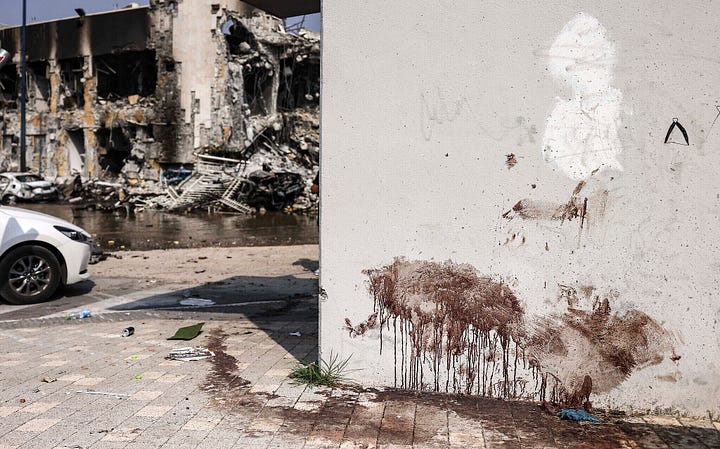
Also during the attack, an Israeli family, who was out for a morning drive, encountered a group of militants near a business park. The father, Dolev Swissa, was fatally shot while attempting to flee the area with his family. Amid the gunfire, screaming and chaos, Odia Swissa struggled to drive her two daughters to safety. Amer Abu Sabila, a 25-year-old Israelis-Arab construction worker from the Bedouin area of Abu Talul noticed the situation and Odia's distress and took over the driving in an attempt to move the car out of the firing range. They managed to escape that situation but near the Sderot police station, more militants opened fire on the vehicle, killing both Abu Sabila and Odia Swissa, as well as policemen who tried to assist them. The daughters, aged three and six, remained unharmed as they lay on the floor of the vehicle during the attack. The story of the heroic act of Amer Abu Sabila garnered widespread recognition in Israel, stirring discussions about the co-existence and cooperation between Arabs and Jews in Israel.
Regaining control over Sderot
In time, IDF forces arrived and began the process of taking back the city. They started with the police station, surrounding it and reducing the Hamas resistance by infantry attacks and tank fire. Before long they had taken most of the station and the IDF decided to just demolish the building, thereby killing any remaining Hamas terrorists inside.
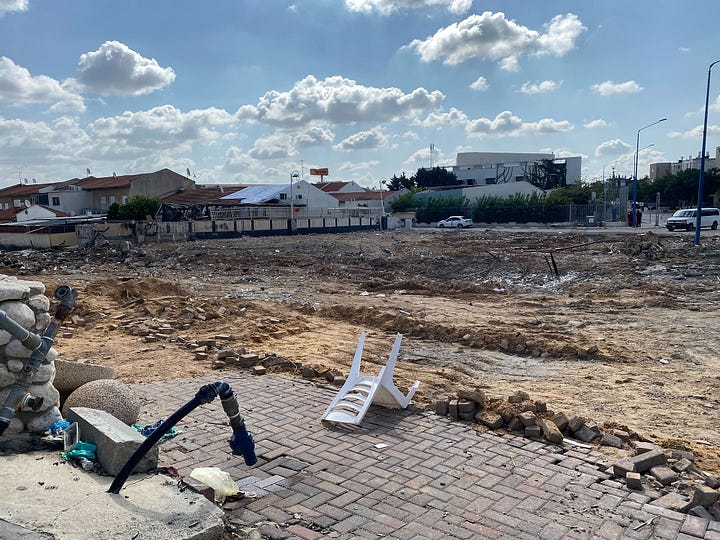
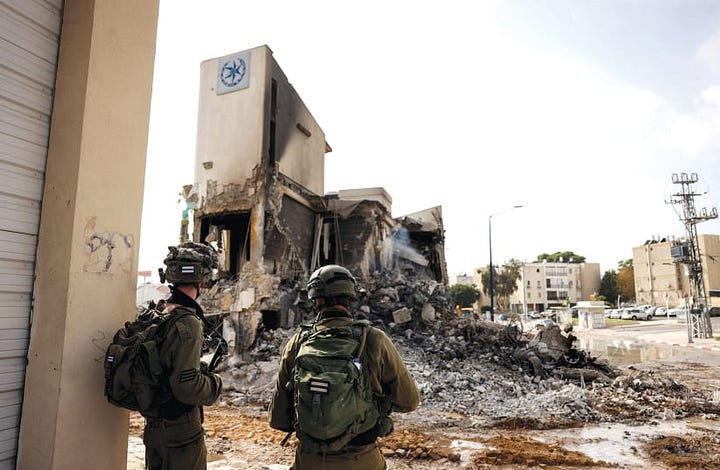
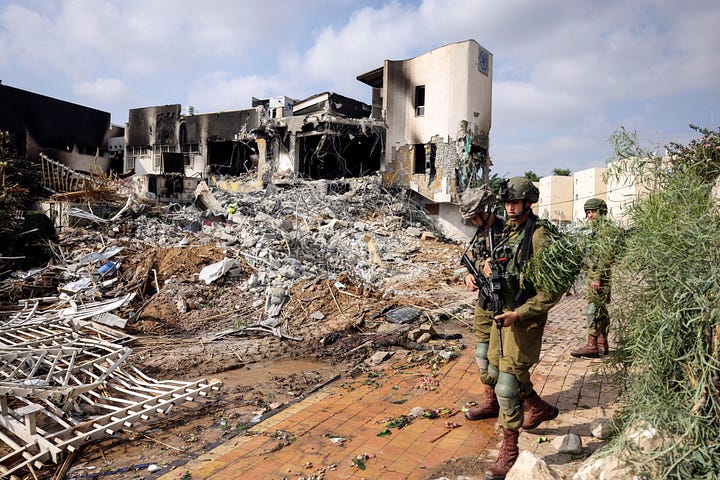
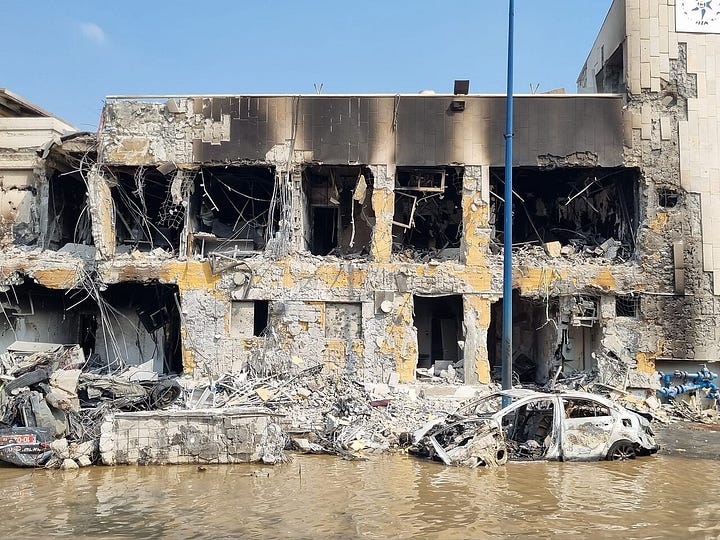
By October 8, Israeli forces had regained control over most of Sderot. However, Israeli forces continued to battle pockets of Hamas gunmen in Southern Israel, including in Magen, and occasional gunfire was heard in Sderot and other locales, where Israeli forces were sweeping the area for any remaining Hamas infiltrators. Authorities ordered residents of Sderot, as well as neighboring kibbutz Mefalsim, to stay at home after a suspected infiltration.
I have reached my time limit on this post, I try to stay around 20 minutes of reading time for these posts and I have gone over that by a bit. Next week I will finish the examination of the terrible events of October 7th. Please share this with as many people as possible. I think that the outrage of the right-thinking people in the West is waning and things like this post could rekindle the horror and disgust that an event like this should warrant. We must support Israel as much as possible, in this fight for their right exsist. We must put pressure on all our politicians to allow Israel to do what it must, to end this threat. Always remember that Hamas is also a threat to Western Civilization as well as Israel.
Chris

